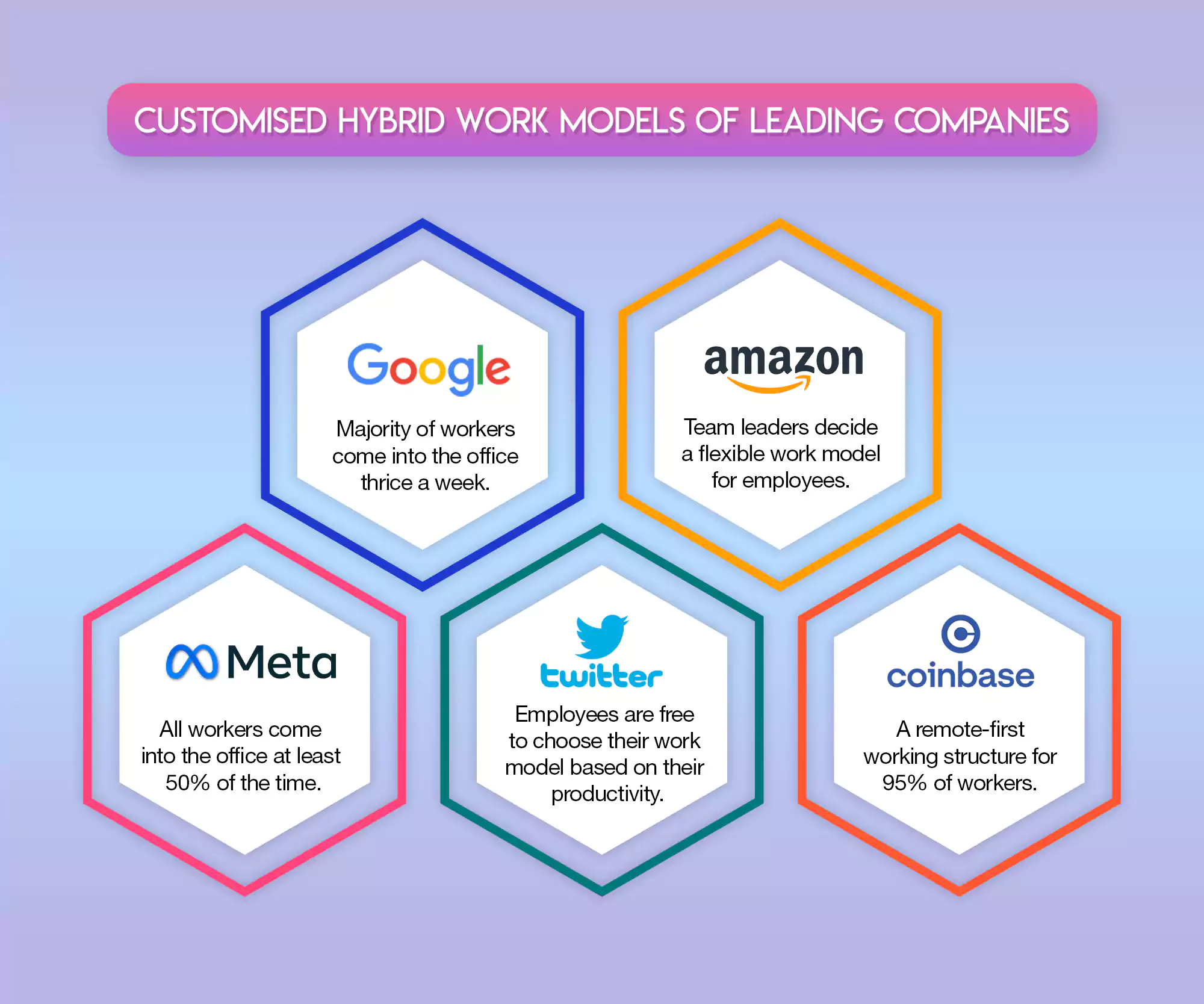
Employees of tech-giant Apple made quite the statement recently when they wrote an open letter to the organisation, demanding work flexibility. “Stop treating us like school kids who need to be told when to be where and what homework to do,” they said. The letter came in response to Apple’s executive decision to change the work regime of its employees. The staff disagreed with this new work regime and added that “there is no one-size-fits-all solution”. Needless to say, hybrid work models have become the phrase of the hour. So what kind of options does this work model offer? How does it impact productivity? And does the hybrid work model improve the organisational culture of a company? Let’s take a look.
What is the hybrid work model?
In a bid to accommodate the new normal, the office and the home had to come together to create a blend of both. Work-from-home allowed the workforce to stay in action while respecting the enforced pandemic lockdowns. However, once the severity of the virus decreased, the 100% work-from-home solution now saw a possibility of occasional office turnout. This hybridity opened up a range of options for employers and employees alike. For example, the ‘hybrid at-will’ arrangement allows employees to choose their work model according to their productivity. And the ‘hybrid split week’ model enables the employer to divide the week’s workdays between in-office and at-home schedules.
Why is it catching on so fast?
Around 90% of organisations intend to subscribe to their own version of the hybrid work model soon, combining remote and on-site arrangements.
Let’s look at some of the reasons behind the success of this model.
Global and local hiring made possible
A company can ensure round-the-clock productivity by recruiting from different time zones and using customised hybrid work models. It also boosts the inclusivity quotient of the company’s recruitment profile. The IT industry, in particular, has profited from this work model, and many international tie-ups have resulted from it. For instance, India’s NASSCOM partnered with Boston Consulting Group (BCG) to create a new hybrid work paradigm to enhance all technology services. Moreover, freelancing platforms like Upwork have tapped a rich vein by offering to develop hybrid frameworks for organisations. This business opportunity has also helped the company add more numbers to its freelance talent pool from over 180 countries.
Improved employee experience
Employee Experience (denoted as ‘EX’) is the total of a worker’s experience from before being recruited to after exiting the company. Improving EX has become a crucial strategy in the corporate world. A company offering substantial EX is able to attract and retain top talent in their organisation. A worthwhile EX also means automatic branding for a company. One factor that positively impacts EX is the hybrid work model, given its customisability. With a schedule conducive to the work-life balance, an employee is more likely to return the goodwill with loyalty to the company and increased productivity. TeamLease, an EdTech company in India, noted that its hybrid workplace had inspired 75% of employees to join upskilling programmes towards improving their performances.
Cost-cutting opportunities for employers
Even with the pandemic waning, employers have become more cautious of their finances, looking for ways to conserve their budgets. Office expenses are a crucial contributor to the costs of company operations. A McKinsey study revealed that companies reduced at least 30% of real estate costs thanks to the hybrid work model. Organisations can also bring down the fees of maintaining the property. Beyond cutting costs, possibilities of financial gain open up where hybrid workplaces are concerned. It is also possible for companies to rent out office space for other purposes on days when employees work from home.
Drawbacks of a hybrid work model
Just like any other model of work, the hybrid model has its challenges.
Increase in work time
Hybridity in a work schedule also means a slight blurring of lines between personal and professional life. Since hybrid work models do not have as clear-cut schedules as traditional work programmes, employees can become lethargic or overworked. Workhuman, a multinational company for office solutions, observed that 52% of hybrid workers felt obligated to work while sick. The lack of consistency in their work rhythm also strains employees, leading to burnout.
Collaborative work hindered
When the work week goes from five days to three or fewer, it requires adjustments on various fronts. Communication within a work team particularly takes a big hit. After all, nothing can fully replace the effectiveness of in-person interaction. Messages get lost in emails, meeting times become harder to synchronise with varied employee calendars, and employees complain that their work does not get recognised. Many management analytics reveal that 60% of employees are unclear of their company’s goals or vision. It is hard to maintain a work culture without the regular conduct of general assemblies, conferences, and celebrations that require physical presence. And without a work culture, defining Key Performance Indicators (KPIs) and ensuring output uniformity becomes challenging.
Logistical differences in WFH situations
Not all employees have the same connectivity, digital equipment, or even living situations. Parents with newborns, newlyweds, older employees, etc., have varying resources available to them as well as varying demands on their personal time. Gartner’s survey shows that only 13% of company executives factor in such logistical disparities. An employee’s professional growth reflects this inequity. Junior employees, in particular, feel left behind when they want to explore and discover their new company, while their mentors prefer to work from home more often.
Hybrid work models recognised as influential
Top-tier companies have started adopting individualised solutions to optimise the hybrid work model.

Tesla CEO Elon Musk’s approach to the choice of the workplace is quite pragmatic and liked by many. He believes that remote working is the best option if you can do the work you do remotely (like software, design, or writing) and you’re exceptional at it.
In India, some of the largest IT employers like TCS and Infosys have realised the importance of work flexibility and are creating avenues for the same.
This change tells us that employees’ work-life balance has become a priority for companies globally. Additionally, employers are willing to engage in discussions around flexibility.
Is hybrid the way to go?
Currently, the hybrid work model is one of the best possible options for organisations, considering that many still have major moving parts in their post-pandemic structure. But is the abundance of options confusing the work culture? Finding and embracing a working model that aligns with an organisation’s culture and doesn’t compromise workplace inclusivity continues to be challenging.


